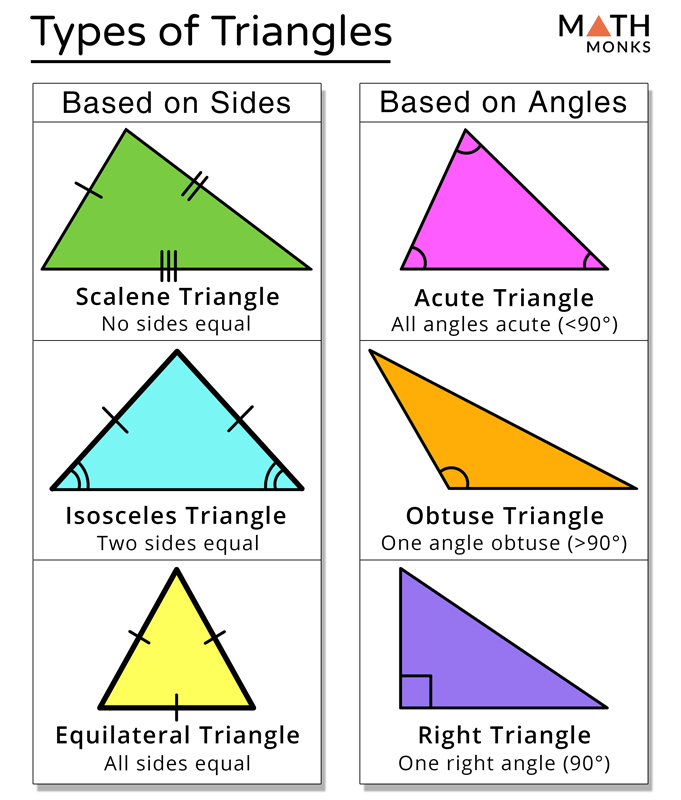Angles, Triangles & Circles
Angle: An angle is called a combination of two rays (half lines) with a common end point. The common end point is known as vertex. The rays as the sides which are basically legs or arms of the angle.
-
Acute angle: An angle whose measure is less than 90o is called an acute angle. These are the smallest being between 0o and 90o.
-
Obtuse angle: An angle whose measure is greater than 90o but less than 180o is called an obtuse angle.
-
Right angle: An angle measuring exactly 90°.
-
Straight angle: A straight angle is an angle whose measure is exactly 180o.
-
Reflex angle: An angle measure is greater than 180o but less than 360o is a reflex angle.
-
Full angle: An angle whose measure is exactly 360o i.e. a full circle.
-
Allied angle: An angle pair which is created by transversal line. These are also known as: Co-interior and Adjacent interior. Explanation: (a) If I draw two parallel lines cut by a transversal, then allied angles are between the parallel lines and on the same side of transversal. (b) The allied angle theorem states that allied angles are supplementary. (c) A line that meets two or more parallel lines is also known as a transversal line.
-
Complementary angles: Two angles are complementary when they add up to 90o degrees. They don’t have to be next to each other; just the sum total must be 90o. Example: (i) 60o and 30o are complementary angles. (ii) 5o and 85o are complementary angles.
-
Supplementary angles: Two angles are supplementary when they add up to 180o. Example: (i) 60o and 120o are supplementary angles. (ii) 93 and 87 are supplementary angles.
-
Vertical angles: Vertical angles are the angles opposite to each other when two lines cross. They are always equal.
Triangle: A triangle is a closed figure with three lines and three angles. These three angles always add up to 180o.
-
Right angle triangle: A triangle in which the measure of one angle equals 90o degree.
-
Isosceles triangle: An isosceles triangle has two equal sides. The angles opposite to equal sides are also equal.
-
Right isosceles triangle: A right triangle that has 2 sides and 2 angles equal. Explanation: In such a triangle, one angle is of 90o and other two are of 45o each. This triangle satisfies the Pythagorean Theorem.
-
Scalene triangle: A triangle with all sides of different lengths and different angles.
-
Acute angle triangle: A triangle in which measures of all angles are less than 90o.
-
Obtuse triangle: A triangle in which the measure of one triangle is greater than 90o.
-
Equilateral triangle: A triangle having three equal sides and three equal angles of 60o.
